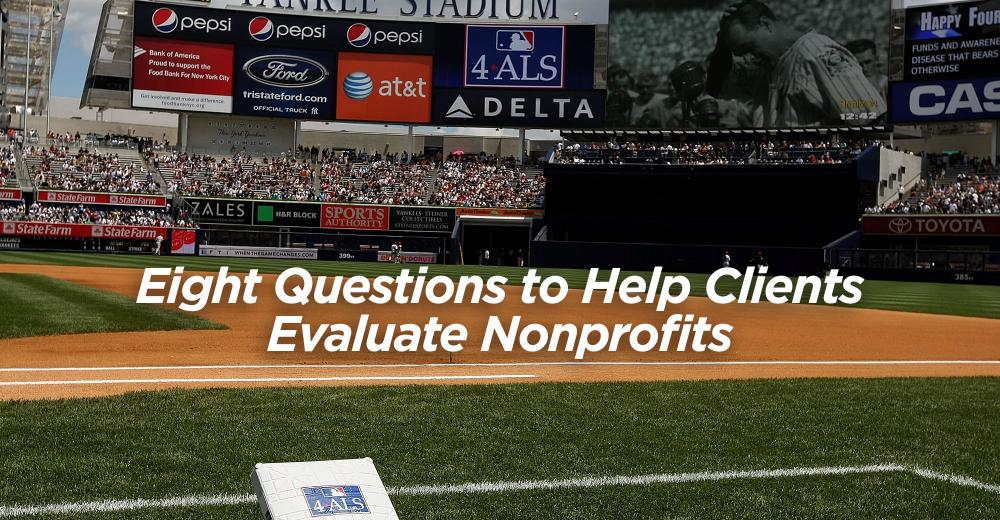1 9
1 9
Look for specificity. Vague, ambiguous intent (“dedicated to making the world a better place”) often leads to vague, ineffectual projects. What’s the overriding purpose of the organization? Is it clearly focused on serving the public interest? Does it appear focused with laser-like precision on a defined goal, or does it seem more interested in “raising awareness?”
Let’s say that your client is interested in reducing urban violence. She finds an organization that’s precisely aligned with her agenda. A closer look reveals that the organization is focused on passing tougher gun control laws as it considers the prevalence of handguns to be an important, underlying cause. Depending on whether your client agrees with this stance, that particular organization may or may not be the right fit. Shared goals are important, but so are aligned convictions.
Perhaps the most important questions your clients can ask are also the most fundamental: Does the organization matter? Is there a clear need for its services? To begin to answer these questions, ask for hard data on the extent of the issue or problem the organization purports to address. Do the organization’s services and projects fill a gap, meet a need, develop a skill or talent or build on an opportunity to solve a problem? What’s its target population and what percentage of that population does the organization serve? Can your clients tell whether these numbers have increased over time, or has there been a decrease in the number of individuals served?
Different nonprofits will approach the same problem from different angles. In practice, this means that your clients will need to evaluate each organization’s strategy on its merits. Is there an inherent logic to its proposed approach? Does it make intuitive sense? Is the program unproven or based on solid evidence? If so, does it cite the results of the research on which the program is based?
How does the organization differ from other nonprofits operating in the same philanthropic space? Is there a need for multiple organizations working in the same sphere? To compare nonprofits with a similar focus, many donors visit the websites of various watchdog organizations. These sites apply a uniform set of standards to analyze and grade the financial and programmatic quality of nonprofit organizations. Some of the more popular nonprofit rating sites include Charity Navigator, the Better Business Bureau Wise Giving Alliance, The American Institute of Philanthropy and Give Well.
Although nonprofits often struggle to quantify outcomes, an organization should have more to offer than a few touching anecdotes. How does it measure success? Is there tangible evidence that it’s succeeding in addressing its articulated goals? Has it posted any bottom-line results? If the organization doesn’t publicize results of any kind, consider it a red flag.
As part of your client’s assessment, he should look at the board’s composition. Are nominees to the board logical and thoughtful, or is the list of names seemingly chosen at random? Is the board dominated by the founder and a few insiders? Ideally, the board should be comprised of a mix of influential leaders and funding “rainmakers,” as well as those with expertise relevant to the organization’s mission.
Google the organization’s name to see if it’s been in the news. Has there been any recent positive or negative attention? Does the nonprofit seem to enjoy a solid reputation? Have there been any allegations of bad conduct? Even if you or your client suspect that the organization has been falsely or unfairly tarred by controversy, bad publicity in the nonprofit world, whether or not it’s deserved, can compromise an organization’s ability to effectively serve its target population.

